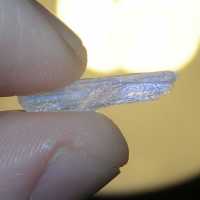
11 Oct Crystal Meth: Is Wipe Sampling Adequate to Determine if Occupants Have Been Breaking Bad?
MedicalResearch.com Interview with:

Crystal Meth
Wikipedia image
Dr Jackie Wright (Fellow ACTRA)
Adjunct – Flinders UniversityDirector
Environmental Risk Sciences (enRiskS)
MedicalResearch.com: What is the background for this study?
Response: The contamination of homes with methamphetamine can occur from illegal manufacture or smoking (ice). The methamphetamine residues that are left behind can result in methamphetamine exposures to future occupants of the home, resulting in the potential for adverse health effects.
To assess the level of contamination that remains in these homes, the method used is to collect a surface wipe sample. This is a wipe of specified area of a surface (such as walls, floors, kitchen cabinets, or window frames etc) which is then analysed to determine how much methamphetamine residue remain on that surface. The guidelines for determining if a property is safe for occupation is based on surface wipe sampling.
This study has further evaluated the level of methamphetamine that is present in a home that was formerly suspected to have been used for the manufacture of methamphetamine. To supplement surface wipe sampling which was undertaken over time, the level of methamphetamine that is within the building/house materials/items themselves was tested, as a bulk analysis, to determine how much methamphetamine is present in these materials, if the methamphetamine has penetrated through and into materials such as the gyprock walls, and if the methamphetamine that is present in materials present when the manufacture occurred have transferred to the homeowners possessions that were brought into the home well after manufacture occurred.
MedicalResearch.com: What are the main findings?
Response: Although the time since manufacture had taken place was significant (over five years), the levels of contamination were extremely high in both household items that were part of the house when cooking was taking place (blinds, carpets, walls, etc.) and also in articles brought to the house post-cooking (rugs, toys, beds, etc.). Both surface wipe sampling and analysis of bulk samples indicate that the methamphetamine is not breaking down or being removed and is transferred from contaminated to non-contaminated objects. These results raise questions about the adequacy of characterising contamination and of making decisions about the extent of remediation required based solely on surface wipe samples. Without fully understanding the extent of contamination that is present, not only on surfaces but within the building materials, it is difficult to ensure that the correct and most effective remedial approaches are taken to appropriately determine and address the risks to inhabitants.
MedicalResearch.com: What should readers take away from your report?
Response: There is the potential for the manufacture of methamphetamine to result in the presence of a significant mass of contamination within the building materials, which may have acted a sink for this contamination. The presence of this contamination can be significant and elevated for long periods of time, more than 5 years in this study, without remediation. The methamphetamine contamination can be readily transferred to all property and possessions brought into the home. This can result in long-term exposures and risks to future occupants of the property.
MedicalResearch.com: What recommendations do you have for future research as a result of this work?
Response: Further work is needed to better understand the distribution of methamphetamine contamination within the building/home materials formerly contaminated through the smoking of ice. In addition further work is required to better understand the health effects of exposures in these types of properties.
No disclosures.
Citation:
Jackie Wright, G. Stewart Walker, Kirstin E. Ross. Contamination of Homes with Methamphetamine: Is Wipe Sampling Adequate to Determine Risk? International Journal of Environmental Research and Public Health, 2019; 16 (19): 3568 DOI: 10.3390/ijerph16193568
[subscribe]
Last Modified: [last-modified]
The information on MedicalResearch.com is provided for educational purposes only, and is in no way intended to diagnose, cure, or treat any medical or other condition. Always seek the advice of your physician or other qualified health and ask your doctor any questions you may have regarding a medical condition. In addition to all other limitations and disclaimers in this agreement, service provider and its third party providers disclaim any liability or loss in connection with the content provided on this website.
Last Updated on October 11, 2019 by Marie Benz MD FAAD
